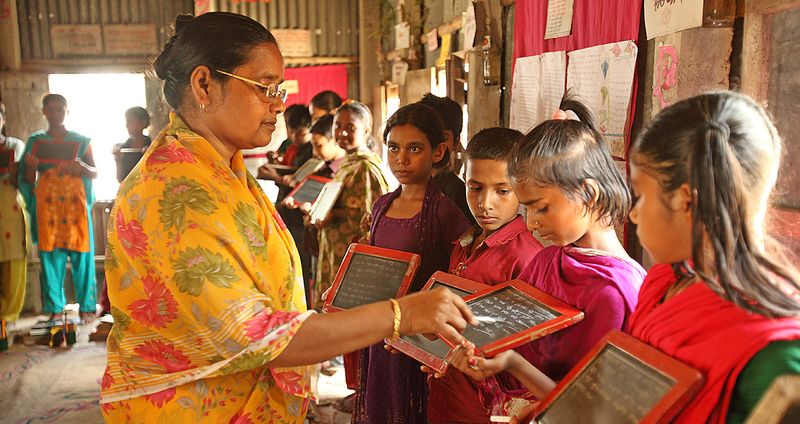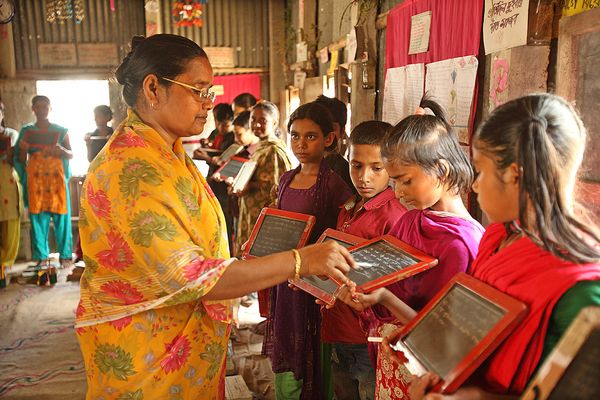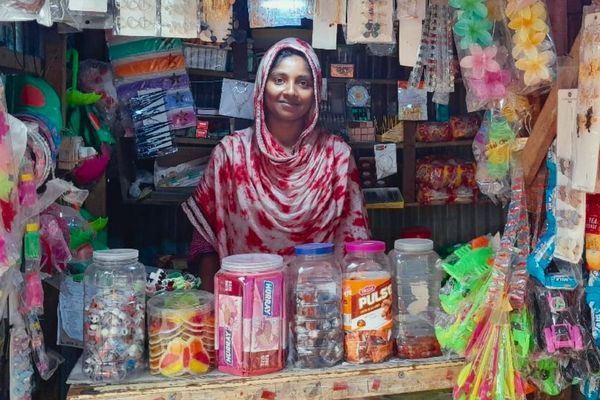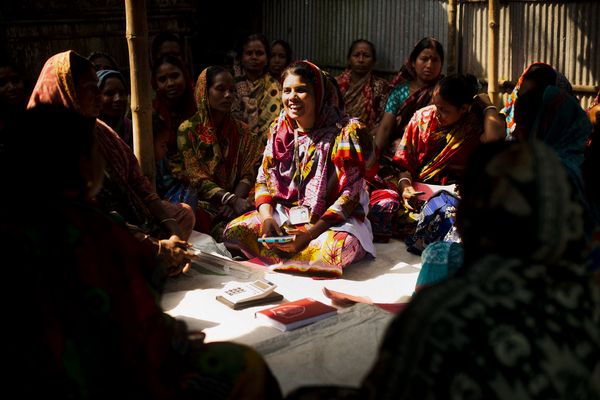
NEW YORK, NY – Extreme heat has killed eight people and forced the closure of all schools in Bangladesh this week, impacting 33 million children. Temperatures have soared to 108 F (42°C), well above the annual average.
BRAC teams are responding. The 52-year-old, Dhaka-based organization’s 50,000 community health workers are spreading awareness, particularly among families with pregnant mothers. At BRAC’s own schools and centers across Bangladesh, closures have impacted more than 200,000 children and young people, over half of whom are girls. The heat also prevents 28,000 children ages 0-6 from attending BRAC’s early childhood facilities this week.
“Climate change is a reality we cannot ignore, and the youngest people in our world will face the worst effects of it,” said Dr. Erum Mariam, Executive Director, BRAC Institute of Educational Development. “Heat stress caused by extreme temperatures will put more people at risk each year. Leaders need to urgently reduce warming temperatures, and factor people living with poverty and inequality into decision making.”
BRAC teams have been piloting multiple innovations to reduce heat, particularly in urban slums, and experts are developing architectural models which self-ventilate to reduce indoor heat.
The Bangladesh Meteorological Department is likely to issue another three-day heat warning this weekend, the third in a row. Bangladesh’s health ministry has issued guidelines to avoid heat strokes, with a specific focus on people who work in the sun, are pregnant, elderly, have special needs, are receiving treatment, have a non-communicable disease like diabetes, and newborns and children. The national healthcare hotline is working 24/7 to ensure people can access information to adapt to the heat.
This is the second consecutive year that Bangladesh has reported deaths from heat stroke, with 20 deaths reported between April to June 2023. It is also the second consecutive year the country has been forced to close its schools. Schools and colleges have been closed for a week so far, while many universities have switched to online classes. Extreme heat has also closed schools in the Philippines, Indian state of Tripura and South Sudan.
The heat is having a multitude of impacts. Ten kilometers of a key highway connecting two southern districts of the country has melted, and significant damage has been reported to several other highways and roads. Mangoes, a prized summer fruit in the country, are dying as soaring temperatures cause them to fall off trees or rot.
Notes to the editor
BRAC is an international development organization known for its community-led, holistic approach and delivering long-term impact at scale. BRAC works with communities in marginalized situations, hard-to-reach areas and post-disaster settings across Asia and Africa, with a particular focus on women and children. BRAC innovates, pilots, perfects, and scales poverty solutions. Born in Bangladesh in 1972, BRAC today reaches more than 100 million people in 17 countries.
About BRAC USA
Based in New York City, BRAC USA is an independent 501(c)3 organization that strengthens BRAC’s impact by raising awareness and mobilizing resources to support and amplify its programs for the people we serve.
Media contacts
Dr. Erum Mariam, Executive Director of BRAC Institute of Education Development, and other members of senior leadership at BRAC are available for comment. Photos and b-roll are also available, and visits can be arranged. Please reach out if interested:
Mica Bevington | [email protected] | WhatsApp +1-202-290-9264
Sarah Allen | [email protected]



